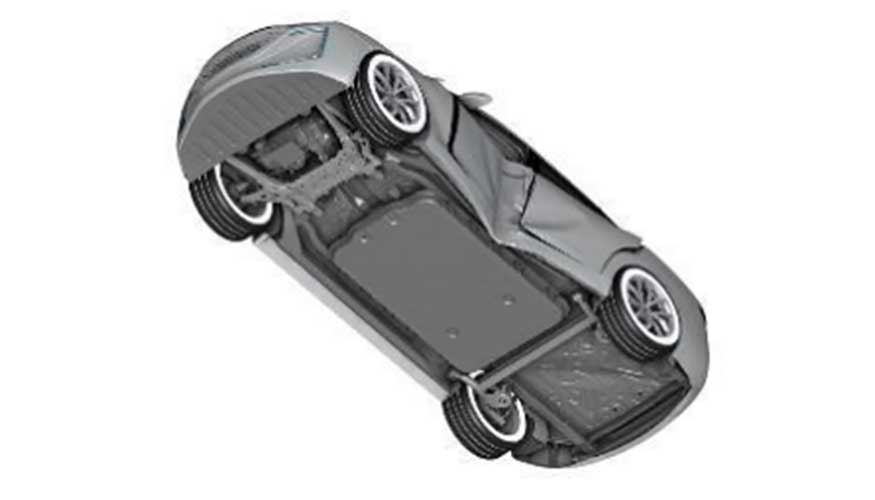Within the Alosmart project, AzterlanGestamp and UPV develop models and predict the behavior of 6xxx series extruded aluminum automotive components based on their chemical composition and heat treatment, making it possible to speed up the product design cycle.
Simulating the structural behavior of different components under different dynamic loads is an essential aspect of the product development process that allows optimizing its design with all guarantees of safety. In the case of developing parts for automobiles, their ability to absorb shock energy is an important aspect and, in addition, should be aligned with vehicle weight reduction strategies.
Collision simulation in an electric vehicle.
In this highly demanding and ever-evolving scenario, in which material development and component redesign play an essential role, commercial simulation software presents important constraints associated with data on the behavior of specific materials. To overcome this limitation, component manufacturers and developers are constantly developing materials databases.
However, as Azterlan researcher Asier Bakedano, Coordinator of the Aluminum and Light Materials Research Line, explains, new machine learning and artificial intelligence techniques are providing us with new opportunities to meet this type of challenge, allowing us not only to model, but rather to predict how certain properties of the material will affect The manufacturing process depends on the final behavior of the components.
With this approach, which aims to improve knowledge and predict the behavior of extruded aluminum 6xxx series materials, the Alusmart project consortium, led by Gestamp, is predicting the mechanical and fracture properties of extruded aluminum structural components based on its chemical composition and heat treatment. The main objective is to develop a model capable of predicting aging cycles, mechanical and fracture properties of a component based on its initial composition and the heat treatment it has been subjected to. They are critical product variables that affect the micro-structure of the metal, reflecting its physical and mechanical properties on both static and dynamic levels.
With this horizon, the working team is currently conducting several structural tests that will be the training data for machine learning models (algorithms); For this reason, generating a large number of results is very important to the success of the project. Among the tests performed, fracture tests aimed at determining the level of plastic deformation at the time of fracture are particularly relevant. At a later stage, after obtaining a large number of results from the tests, the research will focus on developing and implementing machine learning models. Without a doubt, this project will enable us to explore the potential of AI in the field of materials science and will allow us to delve into the fundamental knowledge of the structural components of aluminum, the second most used material by the automotive industry after aluminum and steel, and accelerate product design cycles.
The Alusmart project is funded by the Elkartek Program of the Basque Government. The project consortium consists of Gestamp (project lead), Azterlan and UPV.

“Beeraholic. Friend of animals everywhere. Evil web scholar. Zombie maven.”



:quality(85)/cloudfront-us-east-1.images.arcpublishing.com/infobae/MKYXZKOXMFALPMPONCZCOUAWEE.jpg)



More Stories
Breaking: EUR/USD fell slightly after the German CPI reading
China describes Tesla as an example of success between China and the United States
Room Mate will collaborate with two major international hotel companies